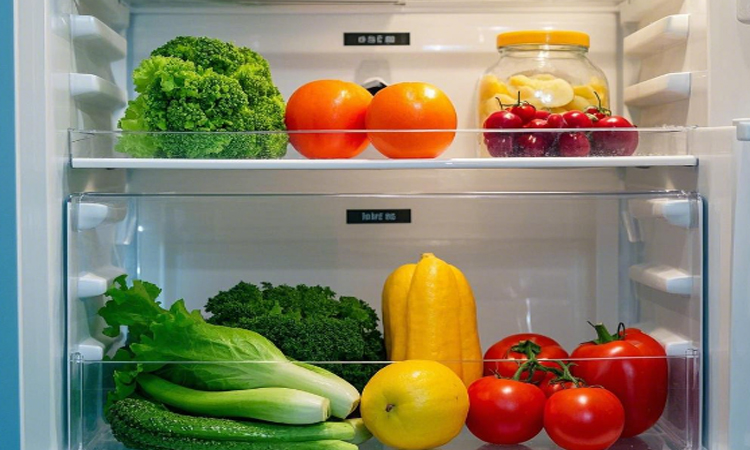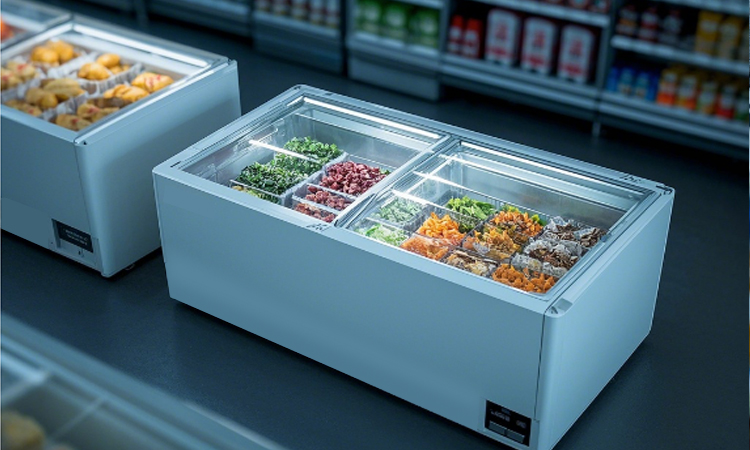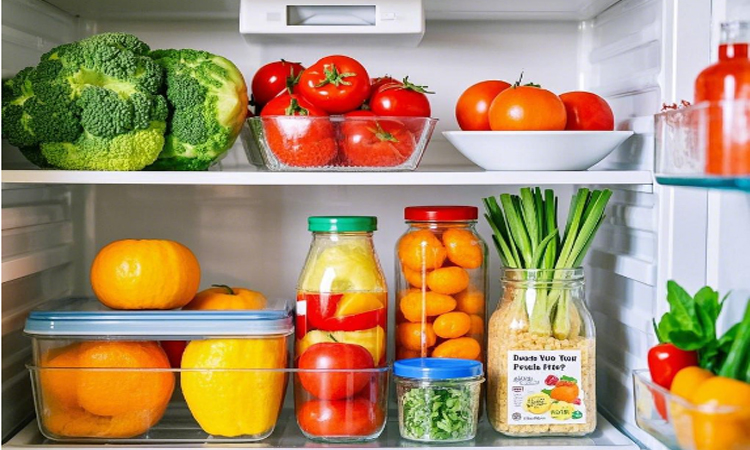

In the global commercial refrigeration equipment market, professional refrigerated display equipment from European and American brands has always occupied the high-end market, with their prices often 3-5 times that of similar Asian products. This price difference is not simply a brand premium but the result of a combination of factors such as material technology, technical standards, and market positioning, reflecting the value orientation and market rules of European and American manufacturing industries.
Cost Barriers from Material Selection and Process Precision
European and American manufacturers are almost harsh in their selection of core materials. The inner liners of such equipment generally use 316 medical-grade stainless steel, which has 40% better corrosion resistance than ordinary 304 stainless steel, making it particularly suitable for long-term storage of acidic ingredients such as cream and jam. The outer shells mostly use aviation-grade aluminum alloy, with a wear-resistant layer formed through anodizing process, and the material cost of a single unit is $200-300 higher than that of similar Asian products.
The control of process precision further pushes up production costs. In the assembly workshop of a German brand, the sealing strip of each unit undergoes temperature cycle tests from -30℃ to 60℃ to ensure that it can maintain sealing performance in extreme environments. This test reduces production capacity by 15% but keeps the defect rate below 0.3%. Swiss manufacturers insist on manually adjusting the matching angle between the compressor and the evaporator to maximize refrigeration efficiency. This process makes the assembly time of a single unit reach 8 hours, which is 4 times that of automated production lines.
The mandatory use of environmentally friendly materials further increases costs. The EU's Ecodesign Directive requires that all commercial refrigeration equipment must use refrigerants with a carbon footprint below 50kgCO₂e after 2025. The R290 natural refrigerant commonly used by European and American manufacturers is environmentally friendly but requires special sealing technology, increasing the cost of the refrigeration system of a single unit by 150 euros. This "non-economic" material selection has become a fundamental factor in the high prices.
Strict Thresholds of Technical Standards and Safety Certifications
Technical standards in European and American markets have built insurmountable entry barriers. The EU's EN 378 standard requires the energy efficiency ratio of refrigeration equipment to reach more than 2.8, which means the compressor must adopt inverter technology, while the energy efficiency ratio of ordinary fixed-frequency compressors is only 1.8. To meet this standard, a Danish brand has developed a magnetic levitation inverter compressor, increasing the cost of a single unit by nearly 1,000 euros but reducing energy consumption by 35%.
The complexity of the safety certification system further raises hidden costs. To enter the U.S. market, equipment must pass 10 special tests in UL certification, including 3,000 door opening and closing tests and 72-hour high and low-temperature impact tests. An Italian manufacturer changed the inner liner welding process from traditional arc welding to laser welding to pass the heavy metal detection of California's Proposition 65, increasing the manufacturing cost by 18% but controlling the heavy metal precipitation at the weld to below 0.001mg/kg.
The integration of intelligent control systems is another important cost. The AI temperature control system commonly equipped by German brands can identify the types of ingredients in the cabinet through cameras and automatically adjust humidity (65% humidity for cakes and 45% for chocolates). The research and development investment of this system exceeds 5 million euros, and the technical cost allocated to each unit is as high as 300 euros. This "excessive investment" in technology has formed a price gap with low-end products.
Value Transmission of Brand Premium and Market Positioning
The century-old accumulated technical reputation of European and American brands has been transformed into stable premium capacity. A U.S. brand founded in 1898 displays its first-generation products from the 1920s in its museum, which can still operate normally. This "heritage quality" narrative has enabled it to maintain a market share of more than 70% in high-end catering groups. Customers are willing to pay a premium for this brand trust. The procurement data of a five-star hotel shows that the European and American equipment it purchases is 40% more expensive than similar products, but the service life is 15 years, twice that of Asian products.
Differentiated market positioning strategies have strengthened price stratification. European and American manufacturers hardly involve themselves in the mid-to-low-end market below $5,000, but focus on high-end customers such as star hotels and Michelin restaurants. A French brand's custom-made display equipment for Disneyland Paris uses curved low-emissivity glass, which can reduce 90% of ultraviolet penetration and prevent cream cakes from discoloring. This customized service makes the price of a single unit reach $23,000, 3 times that of the standard model.
The deep integration of the service system is also an important part of the premium. The "lifetime maintenance" service provided by a Swedish brand includes quarterly on-site calibration and annual compressor maintenance. The total service cost in ten years is about 30% of the equipment price, but this "all-inclusive" service makes customer stickiness reach 85%. This model of deep integration of products and services makes the price break away from the scope of pure hardware costs.
Two-way Shaping of Market Rules and Consumption Concepts
The "buyer rationality" in mature European and American markets supports the high-price system. Professional bakeries pay more attention to the whole-life cycle cost of equipment rather than the initial purchase price. The calculation of a London chain bakery shows that although the initial investment in European and American equipment is 3 times higher, the energy consumption cost in 10 years is 60% lower, and the downtime due to failures is reduced by 80%, making the comprehensive cost lower. This rational consumption concept enables high-priced equipment to gain a stable market.
The self-discipline norms of industry associations avoid low-price competition. The U.S. Commercial Refrigeration Equipment Association (MCRA) has established an "energy efficiency rating label" system, allowing consumers to clearly see the annual energy consumption cost of equipment. This information transparency makes low-price and low-energy-efficiency products difficult to gain a foothold. The German Bakery Association has incorporated equipment performance into industry certification standards, and the use of non-compliant equipment will affect store ratings. This rule design has solidified the market position of high-end equipment.
The "quality worship" at the cultural level also pushes up psychological pricing. At the Paris Bakery Exhibition, the equipment displayed by a brand was designed as a work of art, and the combination of the brushed metal panel and the lighting system won the Red Dot Design Award. This concept of combining industrial products with life aesthetics makes the equipment a "visual symbol" of the store. Consumers willing to pay for this aesthetic value constitute the psychological support for the price.
The high-price phenomenon of European and American high-end refrigerated display equipment is essentially a manifestation of the "value pricing" model - the superposition of materials, technology, and services forms insurmountable competitive barriers. For emerging markets, this price difference is both a challenge and reveals the inevitable path of the manufacturing industry's transformation from "cost competition" to "value competition". With the upgrading of the global bakery industry, this manufacturing concept focusing on the whole-life cycle value may become the mainstream standard of the industry in the future.





